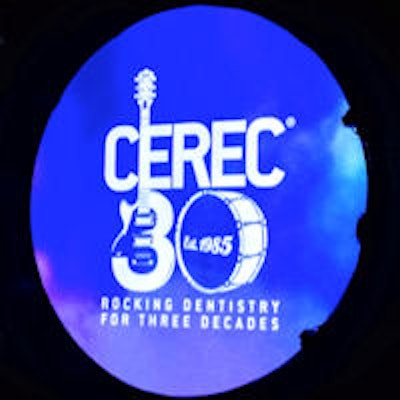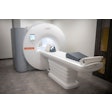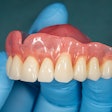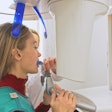
LAS VEGAS - While dentists need to help patients over a lifetime, they also need to be aware that surprising findings from radiographs can sometimes lead to premature treatment, according to a presentation on September 17 by Frank Spear, DDS, MSD, at Sirona Dental's Cerec 30th anniversary event (Cerec 30).
During the digital dentistry conference, Dr. Spear praised the effect that new technologies have had on the 21st-century dental practice. As a periodontist and prosthodontist, his presentation largely focused on the merits and drawbacks cone-beam CT (CBCT) imaging has had on treatment planning, especially for implants.
 Frank Spear, DDS, MSD, speaking at Sirona's Cerec 30th anniversary event in Las Vegas.
Frank Spear, DDS, MSD, speaking at Sirona's Cerec 30th anniversary event in Las Vegas."The imaging allows us to image at a higher resolution than we've ever had," noted Dr. Spear, who is also the founder of Spear Education.
To back up the importance of CBCT imaging, Dr. Spear referenced a recently published study that evaluate the efficacy of various imaging technologies to detect periapical pathoses in root-filled teeth (International Endodontic Journal, June 2015, Vol. 48:6, pp. 582-592). The researchers found CBCT detected significantly more periapical lesions and root canals than single or parallax radiographs.
However, he cautioned that finding lesions or other potential problems with higher resolution does not necessarily mean those findings need to be treated immediately. Like other professionals, he believes the natural tooth should be saved as long as reasonable. But how do we know when that is?
Real versus perceived problems
Dr. Spear noted that delaying treatment has several advantages, including added years with a natural tooth and potentially better results, as treatment technology often improves over time. However, delaying treatment can also have negative consequences, notably a potential emergency event and a loss of current production dollars.
To determine whether treatment is needed, dental professionals need to differentiate between "real" and "perceived" problems, Dr. Spear said. He asked the crowd, "Are there clinical symptoms, or simply questionable radiographic appearance?"
Dr. Spear noted that some problems are real and require prompt treatment, such as infection, extreme mobility or displacement, or pain. However, other times, the patient feels otherwise normal, and the atypical finding, including periapical radiolucencies, apical root resorption, horizontal root fractures, and ankylosis, may not need to be immediately treated -- or treated at all.
In the case of the latter, Dr. Spear recommended that professionals do the following to make an informed decision:
- Name the problem.
- Find out clinical symptoms, if any.
- Determine etiology.
- Ask what you believe will happen if nothing is done, and, more important, how soon it will happen.
- Ask how long it has been this way.
- Find out if it is progressing.
Dr. Spear emphasized that looking at how long the patient has experienced the problem is especially important, because it gives the dentist an idea of how quickly or slowly it is progressing. In some cases, the issue may be regressing. For example, periapical radiolucencies take decades to disappear.
Some imaging technologies make this process easier by allowing radiographs to be overlaid on top of each other, he noted. That way, images can be compared easily for changes.
Helping patients over a lifetime
Nevertheless, some dentists may see such a condition on a radiograph and treat it immediately, even if it means that health or aesthetics for the patient may suffer in the long term.
Because the patient life span has about doubled since the 1900, treatment planning for a longer lifetime is important, according to Dr. Spear.
“The reality is, as people live longer and longer, we have a new problem. We're going to have to treat them over time in stages.”
He illustrated his point with case studies from his own and other practices. In one instance, he delayed treating an asymptomatic fracture until the tooth finally broke -- 25 years later.
"Delay it as long as you can delay it," Dr. Spear said. "We went from the 1970s to 2005. The technology completely changed between then."
When professionals can delay treatment by even a couple of years, it allows for technology to improve and gives patients a better chance for long-term success.
"It's a whole different world today. ... The reality is, as people live longer and longer, we have a new problem. We're going to have to treat them over time in stages," he said. "Don't think what you're going to do is going to cure your patient. It's just going to be another management for your patient."



















